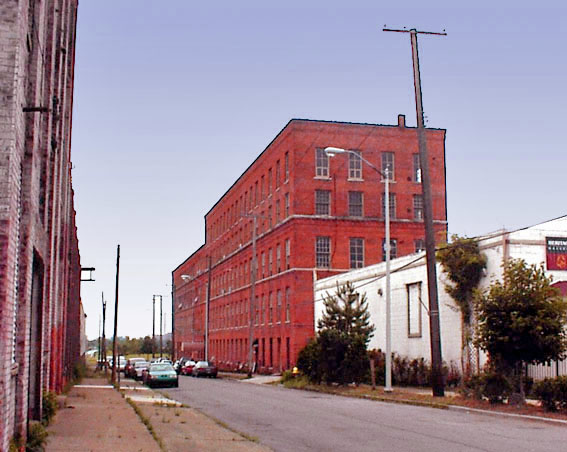
There are several reasons for realistic optimistic about the future of the city of Detroit and its ability to retain and attract prosperous residents. This factory symbolizes Detroit's manufacturing prominence in the pre-automobile era. It is located close to the riverfront and near now abandoned rail lines. In 1890, M. B. Mills, F. T. Ducharme, Edward Bland and David Ireland established a manufacturing firm to produce saddles and plumbing supplies. Shortly thereafter, they manufactured chrome and brass plating for the thousands of stoves then produced in Detroit. By 1905, they were producing chrome products for Detroit's nascent vehicle industry.
The first building in this large complex was designed and built by Harry Carew. It was completed in 1892—a rectangular, flat roofed, four-story structure facing Iron Street. You will see rectangular windows on the lower floors and attractively arched windows on the top story. There also is an appealing use of brickwork at the frieze line just below the parapets. Prosperity led to a rapid increase in the number of buildings in this manufacturing campus. The first addition, I believe, was another four-story, flat-roofed building extending east from the original building along Iron Street. As you will note, it is very well integrated with the first structure; indeed, so well integrated that you might think the two buildings were constructed simultaneously. By 1909, four additional manufacturing buildings were constructed here ranging in height from two to five stories. A clear sign of the age of this manufacturing establishment is the rooftop round water tower fixed upon an iron base.
Vehicle parts were produced in these buildings until 1983. About 17 years later, developers noted the structural integrity of these buildings and began converting them into condos, lofts and galleries. If the economic revitalization of downtown Detroit continues, a substantial number of late Nineteenth Century factories, instead of being torn down or falling into disrepair, will provides homes to prosperous Detroiters who can walk, if they wish, along the charming riverfront to their nearby offices and studios.
Date of Construction: The first building at 227 Iron was completed
in 1892. The additional buildings were completed by 1909.
Original Architect: Harry Carew
State of Michigan Historical Register: P25144, Listed December 5, 1986.
City of Detroit Registry of Historic Sites: Listed
Use in 2003: In the process of being converted to residences
and galleries.
Photo: July, 2003 Ren Farley
Return to Commerical Buildings